The Samsung Galaxy watch 3 and the Mobvoi Ticwatch Pro 3 are fantastic smartwatches that differ based on OS and features.

The Samsung Galaxy Watch 3 and the Mobvoi Ticwatch Pro 3 GPS are excellent smartwatches that are some of my favourite smartwatches.
As an Android phone user, I can’t use Apple Watches, which is a pity. I really liked the Apple Watch Series 5 and the new Apple Watch Series 6. They’re just very well designed, compact and feature rich.
Luckily for me, the latest Samsung Galaxy Watch 3 is a very capable smartwatch and so is the Mobvoi Ticwatch Pro 3 GPS.
The most important thing to focus on is the great improvement the Mobvoi Ticwatch Pro 3 GPS has over its predecessor, called the Mobvoi Ticwatch Pro.
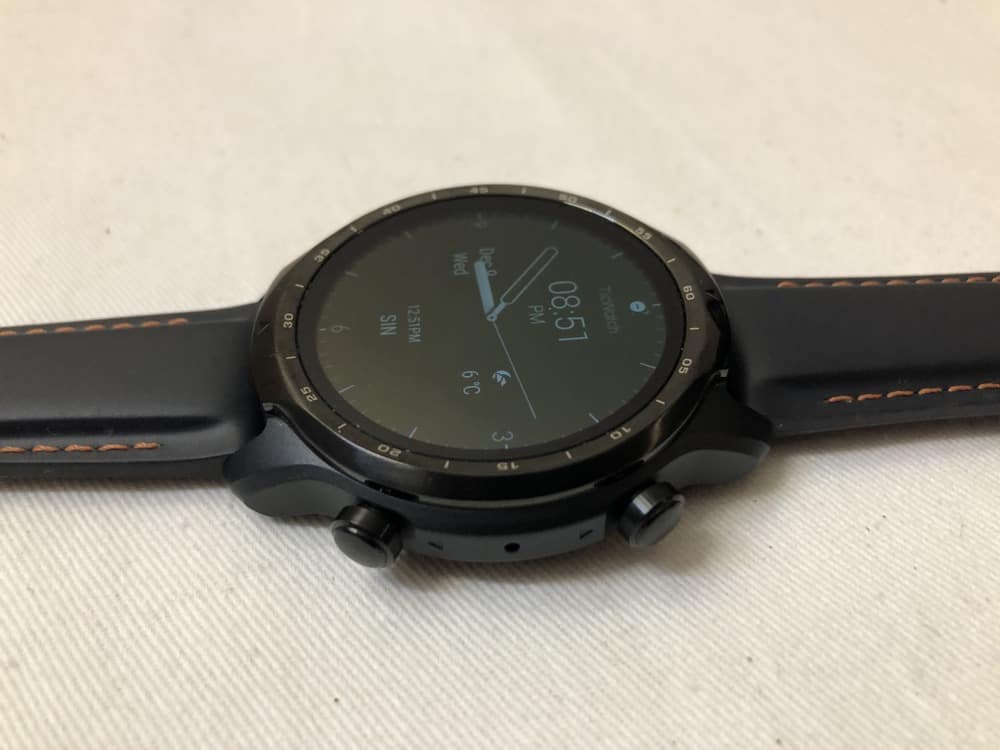
The Ticwatch Pro 3 GPS blazes the trail
The original Mobvoi Ticwatch Pro (and all other Mobvoi smartwatches, really) gets eclipsed by this new smartwatch.
The Mobvoi Ticwatch Pro 3 GPS is just so much faster, its battery life lasts longer and it’s so much more compact. It also comes with all the features of the original Mobvoi Ticwatch Pro too.
It also has the dual layer display which is a fantastic Mobvoi innovation. I haven’t seen it in any other smartwatch. The dual layer secondary display places a full-colour display underneath an LCD screen. The LCD display is transparent when the full-colour screen is on, but when the Mobvoi Ticwatch Pro 3 goes into always on mode, it will turn on the LCD display.
In effect, this really extends the battery life of the Ticwatch Pro 3. No longer does the Ticwatch Pro 3 have to run a battery hogging backlight at full power in bright sunlight as it uses ambient light to illuminate the display. In addition, the Ticwatch Pro 3 comes with a backlight, which was absent in its predecessor, so you will never have to turn on the full-colour display for basic information like time, date and steps.
What’s most important about the Ticwatch Pro 3 is that it’s so smooth.
Google’s Wear OS operating system platform gets a lot of flak for being a sluggishly slow platform. It was true in January 2020 but over time, I have noticed that there’s a lot of improvement, even on low end hardware like a Qualcomm Snapdragon Wear 2100 processor and 512MB of RAM (such as the spec on the original Ticwatch Pro).
Mobvoi’s Ticwatch Pro 3 is the first smartwatch which I knew, even before I turned it on for the first time, that it would not have any problems giving me a smooth experience. Why? Because the Ticwatch Pro 3 comes with the Mobvoi Snapdragon Wear 4100 processor and 1GB of RAM, which makes it the highest spec Wear OS smartwatch out there.
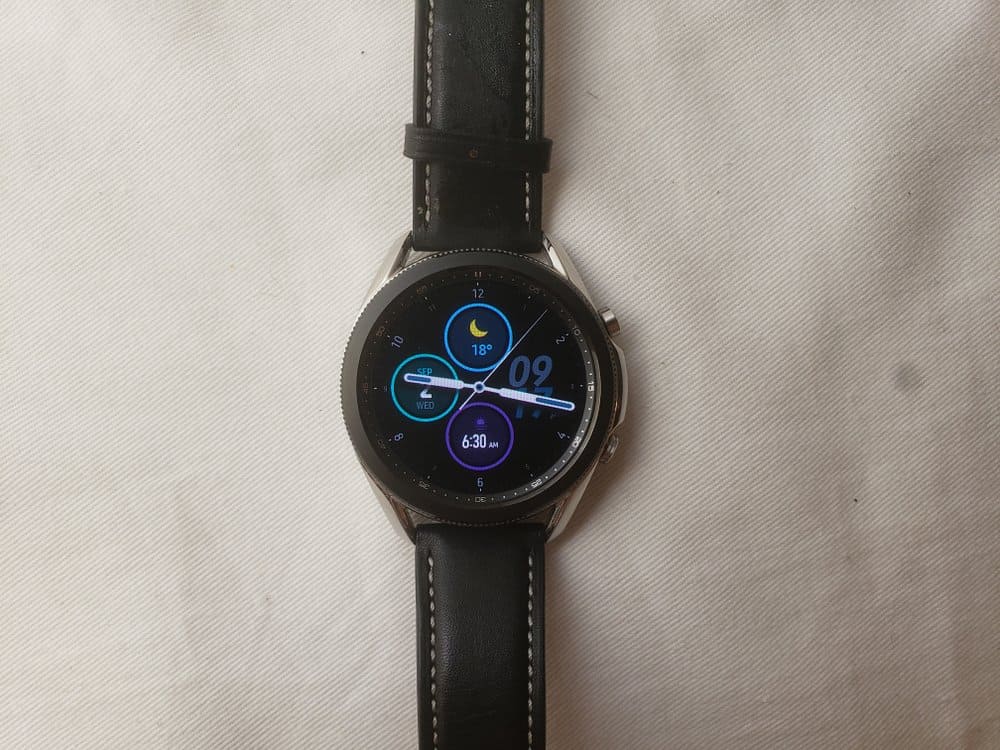
What about the Samsung Galaxy Watch 3?
I like the Samsung Galaxy Watch 3 a lot because it’s a Samsung watch which means it’s a really premium experience all around. Compared to the Ticwatch Pro 3, the materials used to make the smartwatch is less artificial — it’s a leather strap and a lot of metal on the watch case as compared to the plastic-heavy design of the Ticwatch Pro 3.
When you turn both smartwatches on, you get treated to two majorly different experiences. I have always found Samsung’s user interface to be much more colourful and better designed, while Ticwatch (and Wear OS) have always focused more on utilitarianism.
It also really helps that the Samsung Galaxy Watch 3 has a rotating bezel, which makes navigation through menus and messages a lot easier than the Ticwatch Pro 3, which does not even have a crown.
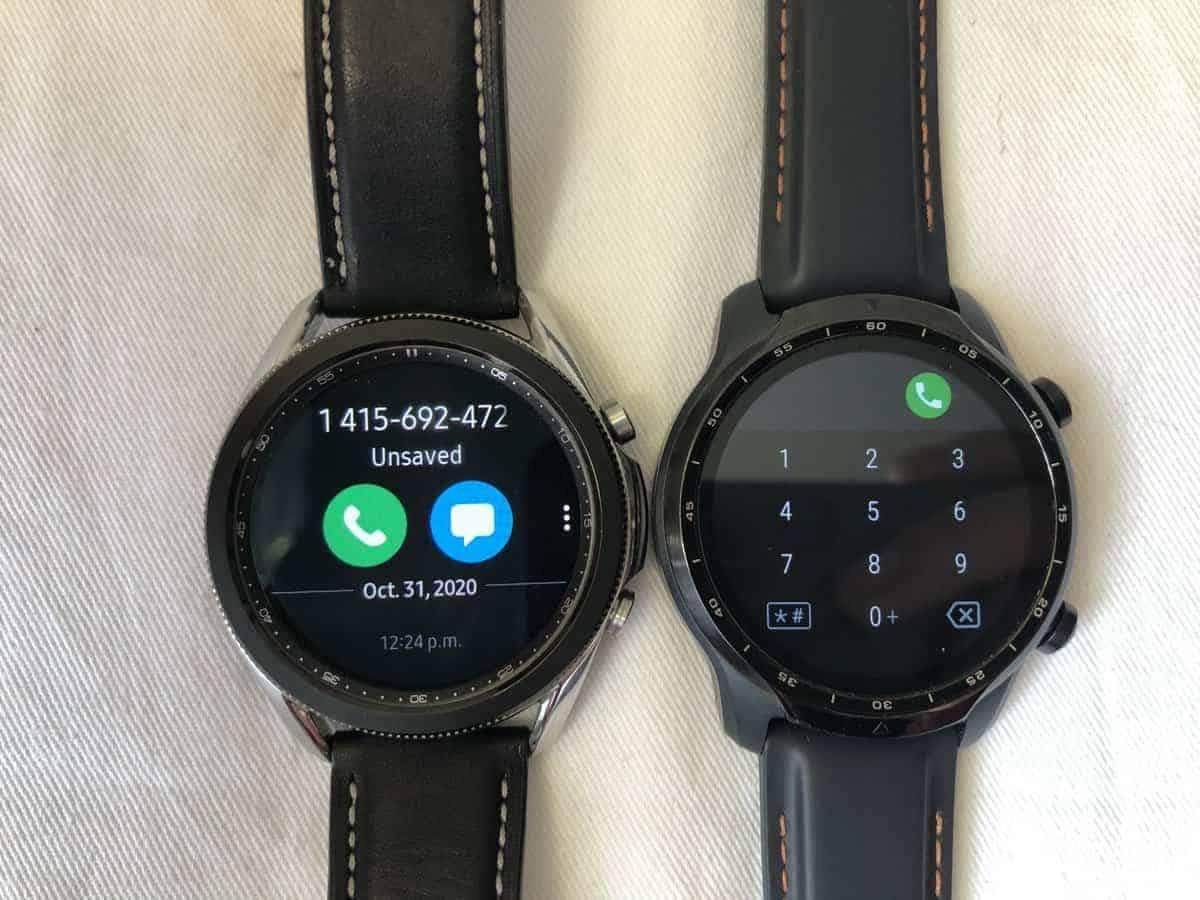
Speaker
A feature that I really like about premium smartwatches is a speaker because it allows you to answer calls on your wrist.
It might sound ridiculous but I have had a few instances when my huge Samsung Note smartphone was so hard to extract from my pockets that being able to answer a call on my wrist was a real nice touch. Or when I went skiing and had gloves on and couldn’t operate a touchscreen.
The Mobvoi Ticwatch Pro 3 has a speaker and so does the Samsung Galaxy Watch 3, but the Samsung Galaxy Watch 3’s sound quality to be much better than the Ticwatch Pro 3.
The Ticwatch Pro 3 had very sharp trebles but not much else meaning that I hard a harder time making out what the caller was saying. The Samsung Galaxy Watch 3 was much better in terms of its range and the rotating bezel really helps when I had to turn up the volume.
Winner: Samsung Galaxy Watch 3
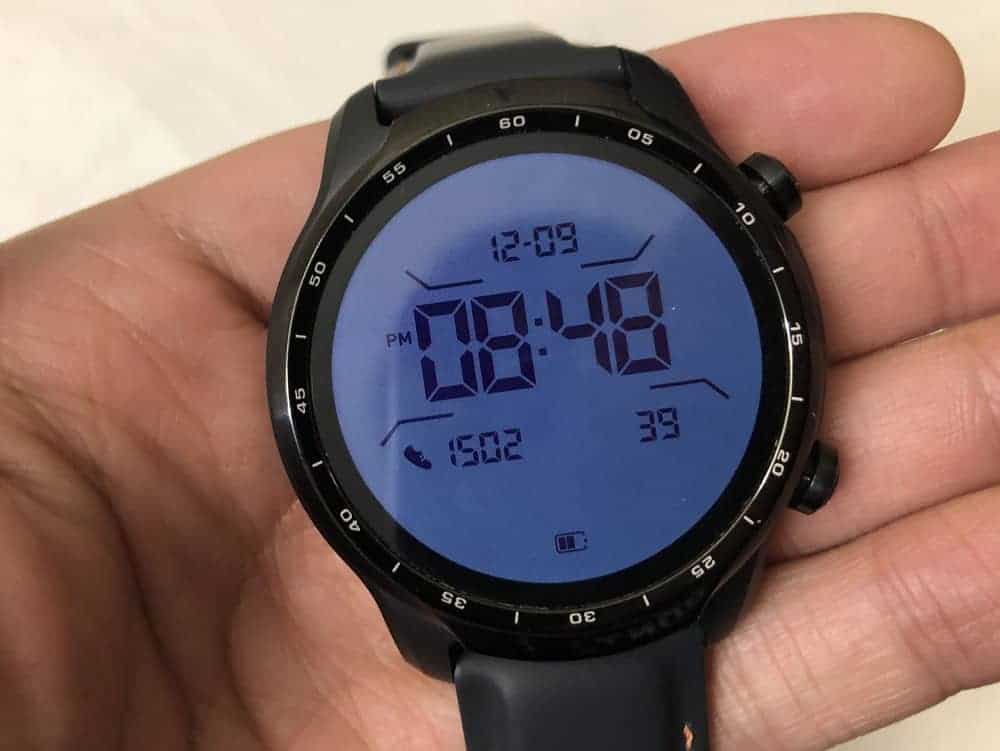
Battery Life
Both smartwatches have a sleep tracking function so I do sometimes wear these smartwatches to bed. Of course, using these two smartwatches 24/7 does wear down the battery a bit faster, since the heart rate sensor would be beaming light throughout the night.
The Samsung Galaxy Watch 3 doesn’t have the dual layer screen feature that the Ticwatch Pro 3 has and therefore I generally charge the smartwatch every day, even though you could get by with charging it every two days.
The Ticwatch Pro 3 is a smartwatch that I charge every two days, although it will definitely last longer.
Winner: Ticwatch Pro 3
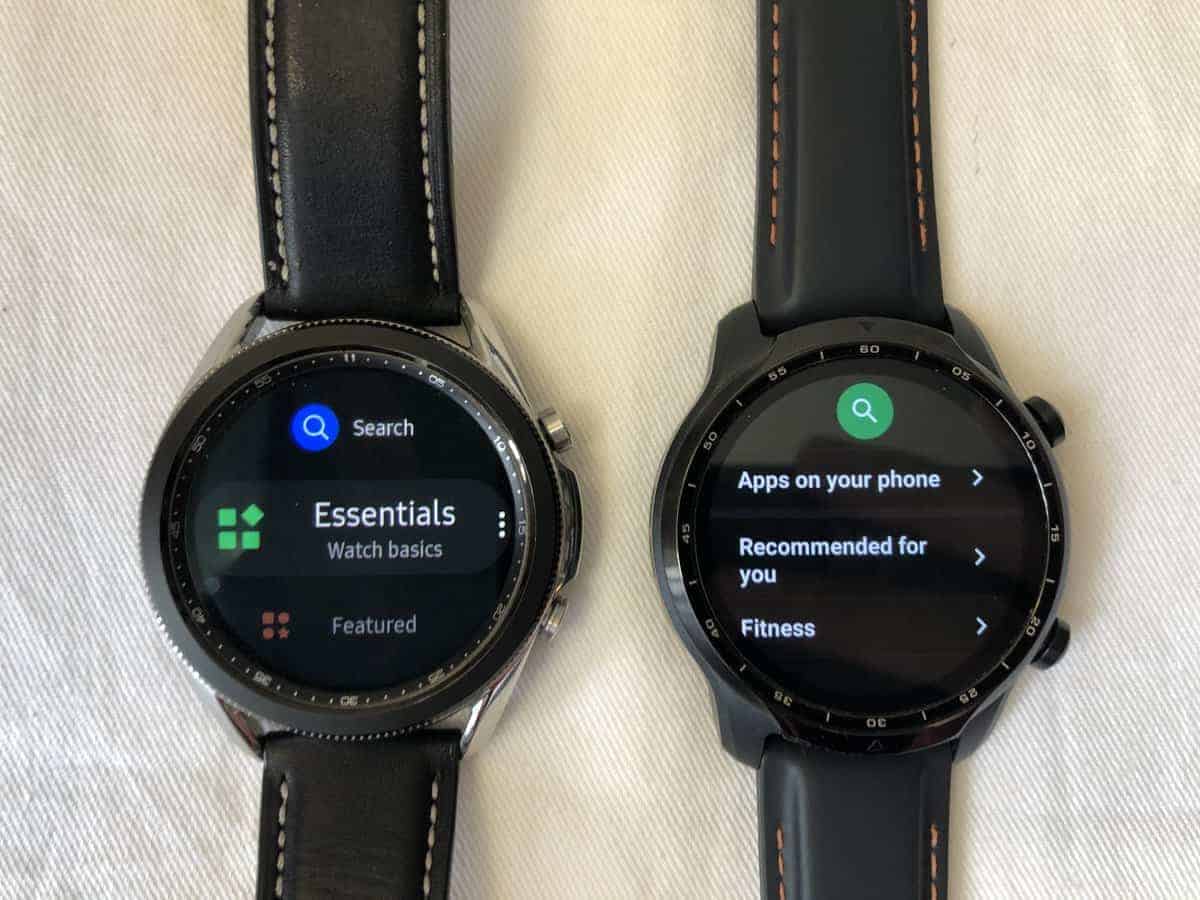
Software
Software is an area where Samsung’s Tizen OS generally can’t beat Google’s Wear OS. When it comes to practicality, I will always choose the Wear OS because it’s just better.
For example, let’s talk about apps you can download off their respective app stores. On the Google Play Store, you can download apps like Google Maps, Google Keep and Google Translate.
Yet every time I go to the Galaxy Store on the Samsung Galaxy Watch 3, I can’t find any apps that I really care for. Luckily the default suite of apps are actually very good.
But let’s move on to the most important app on a smartwatch
Winner: Ticwatch Pro 3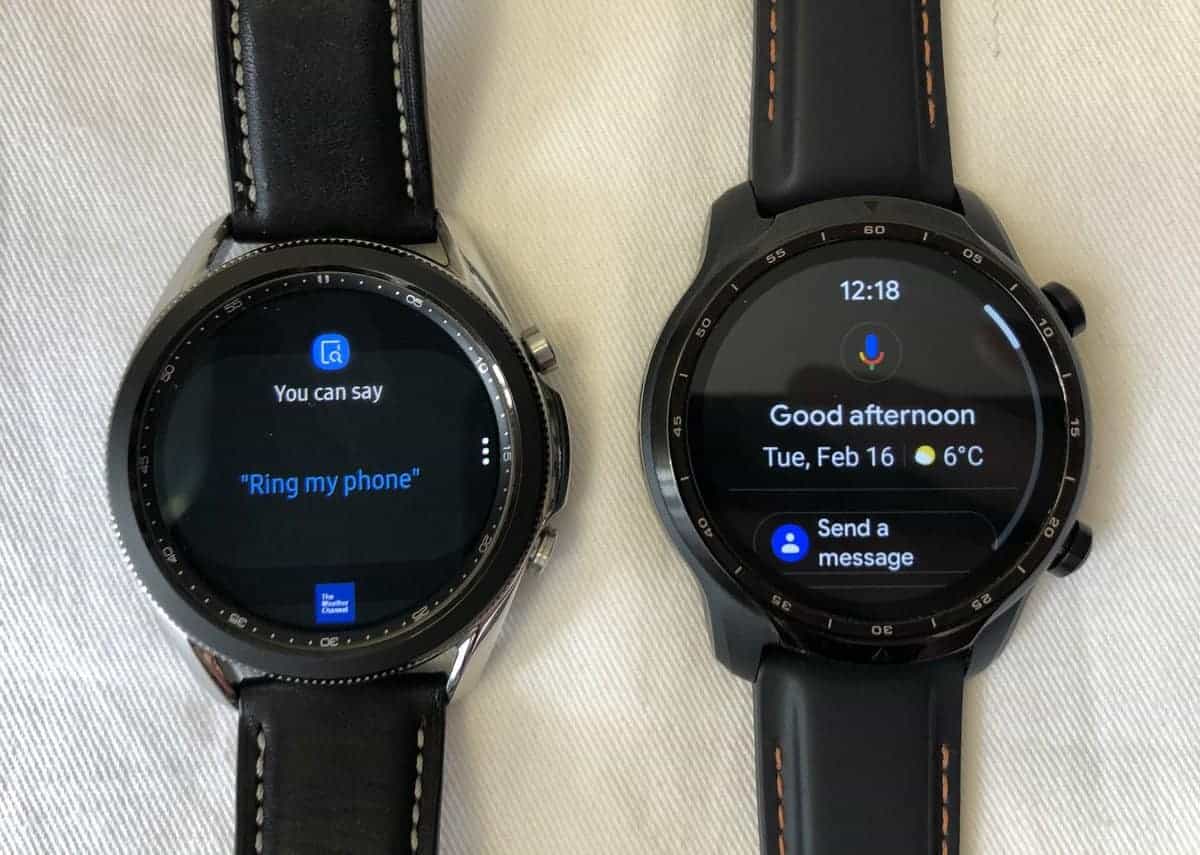
Voice assistant
The voice assistant is one of the most important features on a smartwatch. I know because I have worn some smartwatches without it and just finding out simple information like tomorrow’s weather is so much more tedious.
Again, like all software, Samsung’s Bixby just isn’t as good as Google Assistant. If we had to anthropomorphize these voice assistants, Google Assistant is much better at languages than Bixby and therefore interprets what you say much more fluently.
The excellent speech to text system on the Google Wear OS also means that you don’t get funny transcriptions when you reply to messages. Though I have noticed Bixby improving quite a bit over the last year or so, so it’s not that bad, but Bixby still can’t compete with Google or Apple’s trailblazing voice assistants.
Winner: Ticwatch Pro 3
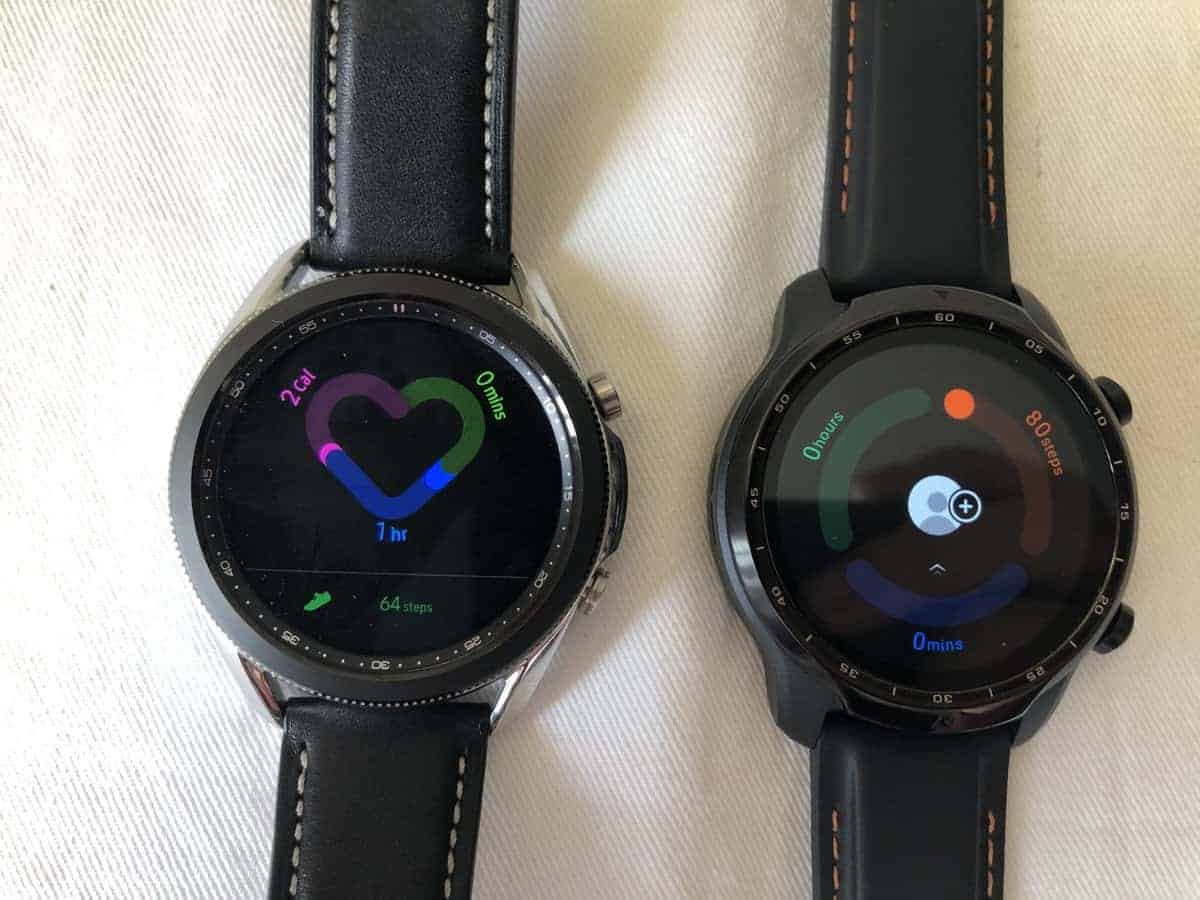
Sports and health
The Ticwatch Pro 3 really puts a focus on health and fitness tracking.
Unlike most other smartwatch brands, the Ticwatch Pro 3 has chosen to develop its own suite of software and so you get an app for heart rate, sleep tracking, exercise, noise level monitoring and blood oxygen levels (SpO2) and stress level tracking.
The Samsung Galaxy Watch 3 has a much simpler suite of apps. There’s no noise level monitoring and although this watch has a SpO2 sensor, blood oxygen monitoring isn’t enabled here in Canada.
When it comes to sports, one thing I really like about the Ticwatch Pro is how TicExercise integrates very well into the dual layer screen. Information from that app is displayed on that screen which is very efficient power-wise.
Samsung has a similar homemade ecosystem with Samsung Health at its nexus, whereas with Mobvoi, they have a Mobvoi app that becomes the centre of all your fitness tracking data. The difference between TicExercise and Samsung’s workout tracking mode is that there are more choices of exercise on the Samsung including different gym workouts.
Winner: Samsung Galaxy Watch 3
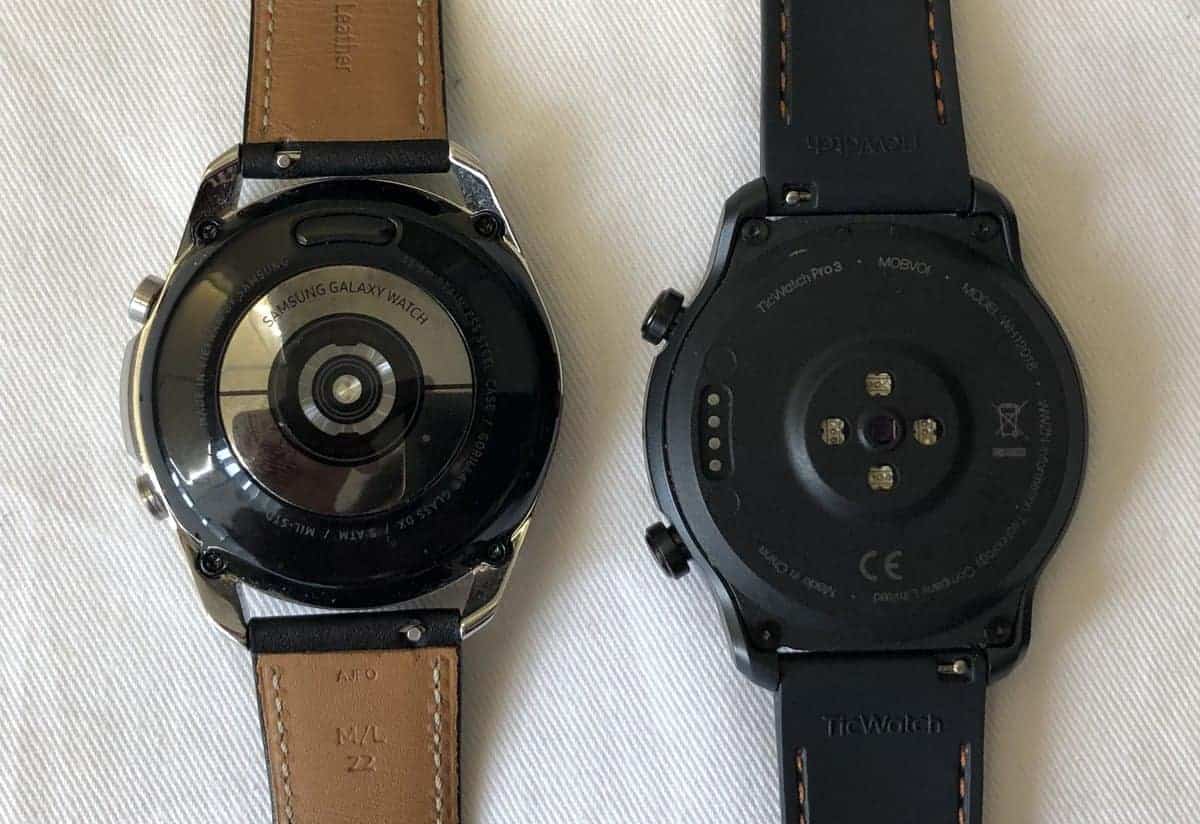
Verdict
If I had to pick between the two watches, I would go for the Samsung Galaxy Watch 3 simply because I much prefer wearing it. Its exterior just looks much better and so does the design of the watch faces and menus.
However, the Ticwatch Pro 3 really wins when it comes to technical prowess. Its dual layer screen, apps that are specific to the Wear OS and the slew of powerful health measuring metrics make Mobvoi’s latest smartwatch a real winner.
Ultimately, the Ticwatch Pro 3 offers great value for money. The Samsung Galaxy Watch 3 is just more refined on the edges but not necessarily absolutely better.




